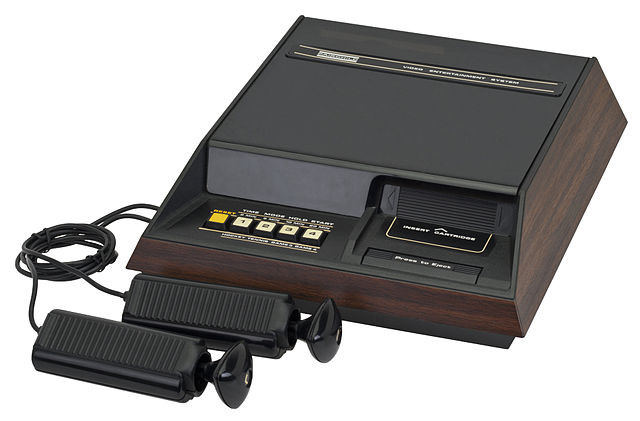Fairchild Channel F Review: The Pioneer of Cartridge
Gaming
Introduction
The Fairchild Channel F, released in 1976,
holds a special place in gaming history as the first home console to use
interchangeable cartridges. Before it, systems like the Magnavox Odyssey
had built-in games, but the Channel F introduced the concept of a library of
games that could be swapped in and out. While it was eventually overshadowed by
the Atari 2600, this console laid the groundwork for the gaming industry we
know today.
Design & Build Quality
The Channel F features a bulky, retro-futuristic designwith a woodgrain panel, giving it a distinct '70s aesthetic. The console's hardwired
controllers are unique, featuring a joystick that also twists and pushes
down, offering more control options than a standard Atari-style
joystick. However, the hardwired design means you can't easily replace them
if they break, which is a downside.
Hardware & Graphics
At its core, the Fairchild Channel F was technologically
impressive for its time. The system was powered by the Fairchild F8
processor, making it more advanced than the Pong-based consoles that
dominated the market. The graphics were simple, featuring blocky, single-color
sprites on a solid background. While it wasn't as visually appealing as later
consoles, it was functional and introduced innovations like AI opponents in
single-player modes.
Game Library
The Channel F's games were primitive by today's
standards, but they were innovative for the time. Titles like Video
Whizball, Space War, and Blackjack showcased what was possible with
interchangeable cartridges. Unfortunately, the small game library (only 26
cartridges were ever released) limited the system's long-term appeal,
especially once the Atari 2600 launched with a more extensive and visually
superior lineup.
Gameplay & Controls
The controller design, while unique, had a bit of a
learning curve. The joystick's ability to twist, push, and pull made it
more versatile than simple four-way joysticks, but it could also feel awkward
at times. Many games were slow-paced and methodical, reflecting the
era's technological limitations. Still, the inclusion of a pause button(something the Atari 2600 lacked) was a revolutionary feature.
Legacy & Impact
Although the Fairchild Channel F was ultimately
outclassed by the Atari 2600, its contribution to gaming history cannot be
overstated. It pioneered the cartridge-based system, proving that home
consoles could offer an evolving game library instead of being stuck with
built-in titles.
Verdict
✅ Pros:
✔ First cartridge-based console
✔ Innovative controllers with multiple input methods
✔ AI opponents for single-player gaming
✔ The first console with a pause button
❌ Cons:
✘ Limited game library
✘ Basic graphics and slow gameplay
✘ Hardwired controllers that can't be replaced easily
✘ Quickly outshined by the Atari 2600
Final Score: 6/10
The Fairchild Channel F was a groundbreaking
system, but its limited game selection and aging technology meant it
didn't stand the test of time. However, for retro gaming enthusiasts and
collectors, it remains an important piece of history that helped shape
the gaming world we enjoy today.


